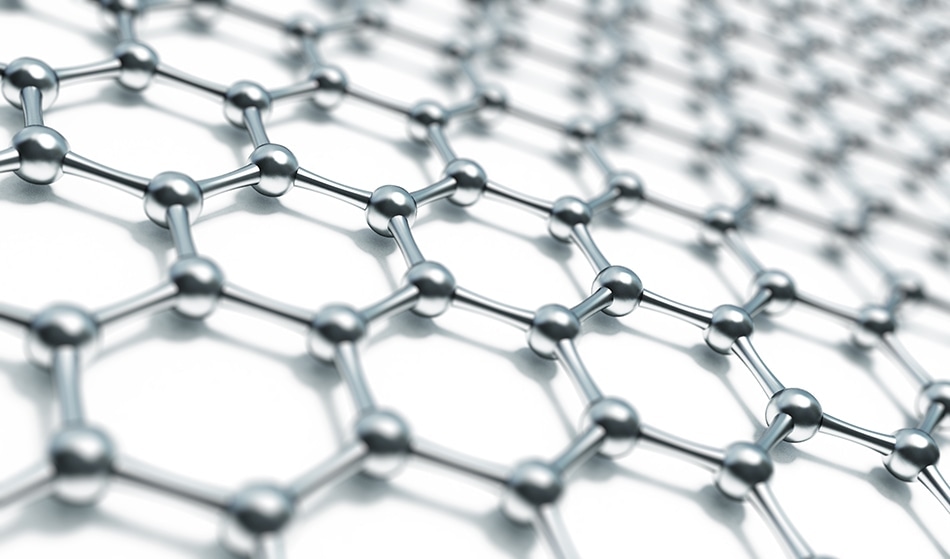A team of researchers at the Indian Institute of Technology (IIT)’s Department of Metallurgic Engineering and Material Science in Mumbai, in collaboration with the Nuclear Fuel Complex’s Department of Atomic Energy, have recently demonstrated that graphene based lubricants and coatings were able to slow down the evolution of wear damage and surface roughness in mechanical parts that typically experience high contact pressures, such as during cold pilgering processes. To demonstrate the effectiveness of the graphene based lubricants over traditional mineral oil lubricants, the team of researchers created a custom-made friction-and-wear tester which replicates the tribological phenonema and parameters that take place during the cold pilgering process.
What is cold pilgering?
Cold pilgering is a process by which tubes made up of different alloys (e.g. aluminum, copper, gold, silver, stainless steel, titanium or zirconium) are used to simultaneously reduce the diameter by up to 70 – 85%, as well as the wall thickness of extrude tube, through the use of ring dyes and a tapered mandrel. This process greatly improves the material’s grain structure, while also reducing the outside and inside diameter of the tube in a rapid manner. The roller grooves allow for the feeding and rotation of the extruded tube for each stroke, thereby allowing for the stretching and diameter reduction to take place.
Wear and Tear in Cold Pilgering
As a result of the back and forth motions involved in the cold pilgering process, the tube and mandrel are often subjected to extreme contact pressures in the order of gigapasacals. Due to the fact that the inner surface and the mandrel are usually only lubricated once in the beginning of the cold pilgering process, and the defects that result from cold pilgering often occur in the middle of the process as a result of extreme contact pressures, the choice of which lubricants and coatings are employed therefore play a key role in reducing the wear of the involved mechanical parts. Other factors that affect wear and tear in cold pilgering include the compatibility of the lubricant with the material pilgered and contact surfaces, the ability of the lubricant to sustain high contact pressure, as well as the flow characteristics. Each of these factors must therefore be considered when making the choice of which lubricants should be utilized during for cold pilgering process.
Traditional mineral oil having chlorinated extreme pressure (EP) additives is the most commonly used lubricant for cold pilgering processes. When studying the pilgering process in a laboratory scale, researchers often struggle with replicating the conditions of contact pressure, contact geometry and sliding frequency and velocity that is required for cold pilgering. Therefore, there are no comprehensive studies available to suggest that currently used mineral oil lubricants will be able to maintain its properties under high pressure, contact geometry and reciprocating sliding velocities and frequencies that are associated with the pilgering process.
 Image credit: Egorov Artem/Shutterstock
Image credit: Egorov Artem/Shutterstock
Developing the Graphene-Based Lubricant
Amartya Mukhopadyay’s team from the IIT designed a linear reciprocating tribometer (LTR) with reciprocating cylinder arranged on the top and a fixed half cylinder as the bottom part, which could replicate the tribological conditions of cold pilgering process. To determine the surface effect of the lubricant during the testing process, the researchers evaluated the coefficient of friction of each lubricant used, where they concluded that neither the mineral oil lubricant or the graphene-based lubricant had any effect on the coefficient of friction during the test process. The evaluation of wear damages of the lubricants was based upon the presence of any deformations beneath the surface of the tubes, defects, cracks, as well as any lateral chipping or delamination.
The researchers determined that the graphene-based lubricant they developed significantly reduced the amount of abrasive wear caused to the materials as compared to the mineral oil lubricant. Future industrial applications of a similar formulation of graphene-based lubricants or coatings could provide a useful addition to avoid wear and tear in the cold pilgering process, as well as other machineries that exhibit similar deformation issues.
References:
- “Wear damage and effects of graphene-based lubricants/coatings during linear reciprocating sliding wear at high contact pressure” D. Mishra, F. Sonia, et al. Wear. (2018). DOI: 10.1016/j.wear.2017.12.024.
Disclaimer: The views expressed here are those of the author expressed in their private capacity and do not necessarily represent the views of AZoM.com Limited T/A AZoNetwork the owner and operator of this website. This disclaimer forms part of the Terms and conditions of use of this website.